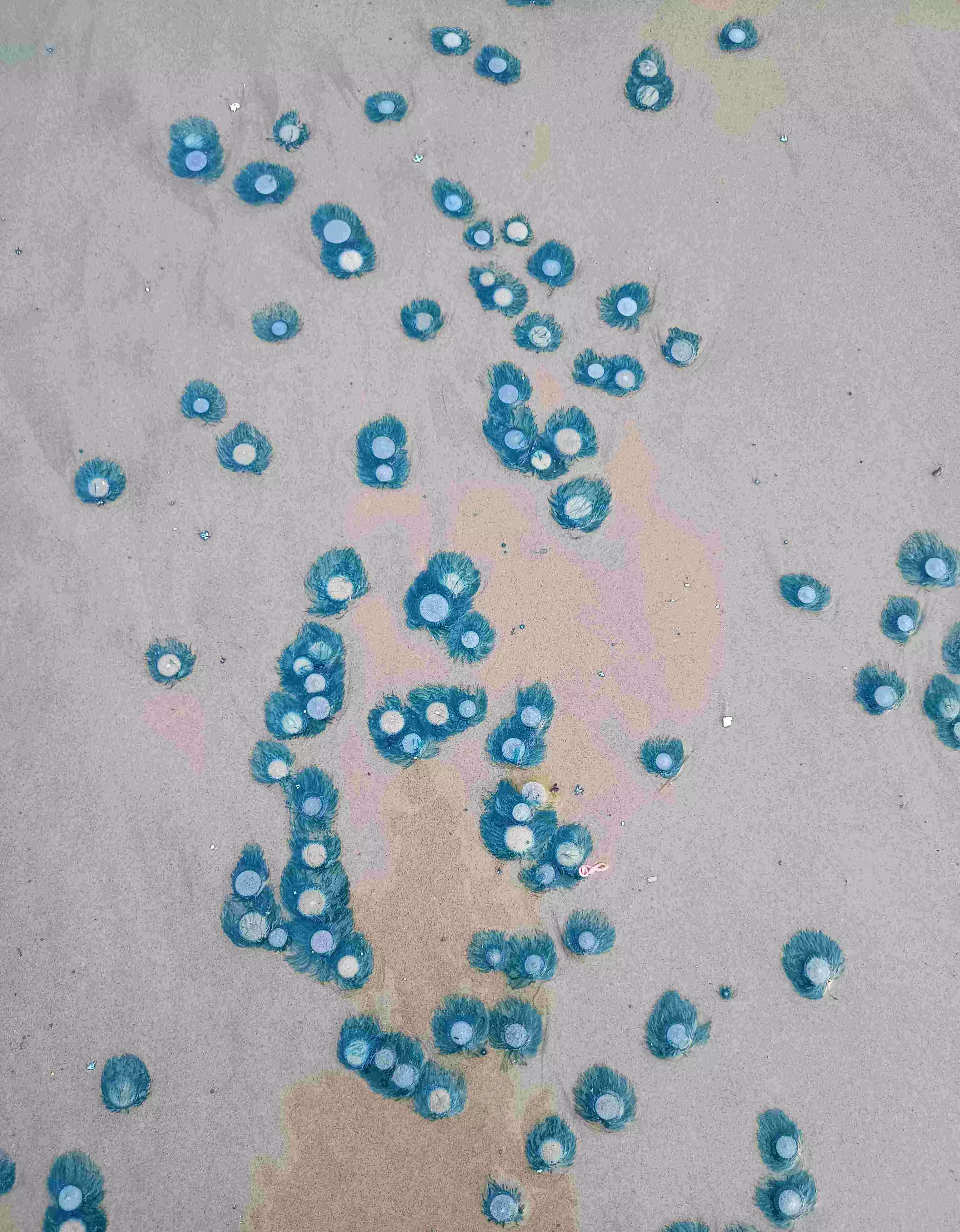Fascinating Blue Button spotted on Vizag shores; calls for conserving nature
But, if you come in contact with one of these creatures, do not touch it.
By Sri Lakshmi Muttevi
Visakhapatnam: Have you heard about Blue Buttons? They are colourful and mysterious creatures seen in the beaches. These beautiful creatures are now an attraction in the Visakhapatnam beach stretch.
A video posted on Instagram by Vimal Raj from the environmental awareness group Wilded shows how these blue mysterious creatures are spread across the sand.
“These creatures wash up on Vizag shore every year. Usually when the direction of the wind is towards the land, the wash up on the shore. These float on water and do not swim,” said Vimal.
"What’s fascinating is I, along with the East Coast Conservation Team (ECCT), started spotting them a few years ago in the Vizag beaches but since a month, they have been spotted in large numbers,” Vimal added.
Educate people about nature
According to Vimal, he wanted the citizens of Visakhapatnam to know about these amazing sea animals. His main idea to post a video and let people know is to educate them, especially children, about the marine species of the Vizag coast.
“People should go out and explore the amazing sea creatures on the Vizag coast. Even if we don’t know what the animal or plant species is, one can share it on the citizen science platform iNaturalist to know more. This helps us to understand our oceans in a much better way,” Vimal said.
What are these creatures?
Porpita Porpita, more commonly known as the Blue Button, are found on the beaches.
Blue Buttons get their name from their button-like shape but are not a single organism even if they appear so. They are a colony of small predators called hydroids often confused with jellyfish, to which they are closely related.
They come towards the story in the current and go back when the tide rises. If one steps on the creature with bare feet, they will have mild irritation but if one steps on a sea slug, it might sting.
But if you step on with footwear, the creature might die.
But, if you come in contact with one of these creatures, do not touch it. They are usually painless but can irritate the skin. Blue Buttons typically move with the winds, currents and tides. They usually wash ashore on beaches during the summer months.
The blue button can grow up to 30 mm in diameter and lives on the surface of the sea. The blue button has a single mouth located beneath the float, used for both the intake of prey and the expulsion of wastes.
Watch out for sea lizards
While blue buttons are not fatal to humans, there is another species, the sea dragons or sea lizards (Glaucilla marginata), that were seen preying on the blue button.
“These blue-shaded creatures float and move with the wind like their prey and are a type of aeolid nudibranch slugs or snails. But unlike other snails, their foot helps in floating instead of sticking to surfaces and moving. Sea lizards feed on the blue button and store their stinging cells in cerrata (the whip-like structures on the side).
They can use them and sting the predators or any organism that approaches them,” said Vimal.